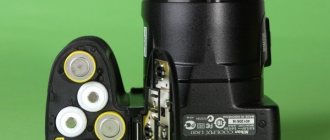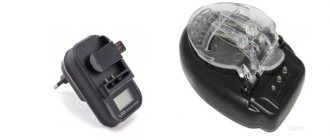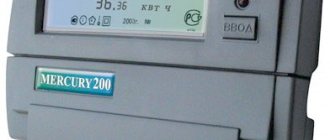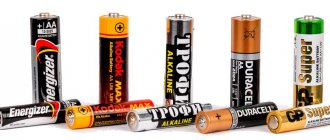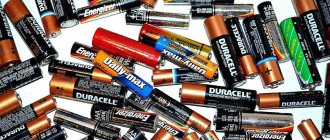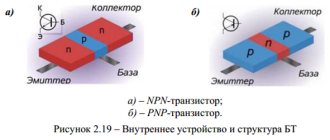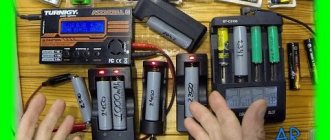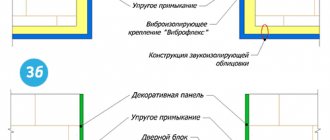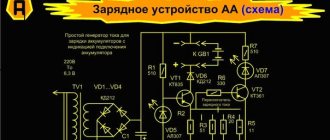Pinky batteries, what are they called? Their second name is AAA type. The primary name came from their size, about the size of a little finger. You could say this is a popular name. And the name aaa is already scientific, classification.
In shape they resemble a small elongated cylinder. They have a characteristic colorful shell with inscriptions. The industry produces casting, salt and alkaline types. Technical characteristics and service life depend on the integrated electrode.
What are AAA batteries and what are they? This is a 1.5 volt salt battery. Used in various electronic devices that consume little energy. Similar battery-type elements may be found on sale. Their capacity is significantly higher than usual, which means that their performance will be extended due to this.
Perhaps someone thinks that aaa are finger ones, but this is not so, they are little finger ones. How is this word spelled? It is written as you see above.
AAA battery and its characteristics
Below are the technical parameters of the little finger battery, dimensions, current, voltage, expiration date and much more. This description will help you understand what this power source is.
This energy source is protected against corrosion and short circuit. It consists of equipping the battery with a plastic or metal case. The cylindrical electrode is insulated with special insulation.
The positive end is made in the form of a small cylinder occupying about a third of the total diameter. The negative pole resembles a flat, sometimes raised area. The dimensions are most often the same, but the weight varies slightly due to the use of different chemistry.
The letter AAA on the batteries indicates their shape and size. That is, this is a kind of GOST standard. An example in the photo below!
Pinky battery designation
According to the EIC JIS nomenclature, it is designated R03. Soviet digital designation - 286.
- The brand in this case is Energizer.
- AAA element tim.
- Chemistry – Alkaline or alkaline – alkalin.
- Best before date. This power source has it until 2026.
- Negative pole.
- Positive end.
Thus, the marking of the little finger battery partially shows the characteristics that are reflected in the following sections.
How many amperes are in a pinky battery?
As a rule, the current of such AAA batteries is not large. In this battery it can hold up to 4 amp hours.
Battery capacity aaa
It has an energy density of 1250 mAh - it is alkaline. Rechargeable AAA batteries have a capacity of 300 – 1100 mAh. Salts have 540 miles amperes per hour.
Voltage
The voltage is 1.5 v. This parameter is typical for salt and alkaline energy sources. For nickel metal hydride (Ni-MH) batteries it is 1.2 volts.
If you are wondering up to what voltage you can use AAA batteries, then look at the device data sheet.
Pinky battery size
They have the following standard sizes:
- Diameter 10.5 mm.
- Length 44.6 mm.
Element weight aaa
The little finger battery weighs approximately 12 grams.
Shelf life of pinky batteries
To find out this parameter, look carefully at the label. On some elements they write that it is 8 years. But the operating time depends on the device in which they are used. And how many micro ampere hours does it consume.
Frost-resistant AAA batteries are nickel-cadmium. But this is already a battery type.
The body is made of metal or aluminum and a colorful label with the main characteristics is applied to it. It can also be made of paper, but this is very rare these days.
Operating temperature range
It is -40 – “+60”.
Differences from AA
AA and AAA batteries are similar in purpose, chemical composition and body shape. Both options are available in cylindrical shape with standard power ratings. The main difference between AAA and AA batteries is their size - the former are a smaller version of the latter. Therefore, elements AA and AAA are called finger or little finger. The capacity also depends on the size of the case - for AA it is much larger with the same electrolyte composition. The operating voltage is the same.
Differences between AA and AAA batteries.
According to the chemical composition, AA and AAA power supplies are divided into the following types:
- nickel-cadmium;
- lithium-ion;
- nickel metal hydride.
Nickel-cadmium cells have a relatively small volume. Due to the memory effect, they are also susceptible to losing their original life after incomplete discharge before connecting to the charger. Nickel-cadmium batteries must be disposed of through special containers or a collection point, as they are harmful to the environment if the housing seal is broken.
Lithium-ion power supplies have a standard power of 1.5 V. Their housing combines two elements at once: a lithium battery with a voltage of 3.7 V and an energy catalyst from 3.7 to 1.5 Volt. Li-Ion power supplies are intended for compact electrical equipment and are characterized by the absence of memory effect.
Nickel-metal hydride batteries have increased capacity and are practically not subject to memory effect. Due to their environmentally friendly composition, they do not need to be disposed of through collection points. Modern versions of top-end Ni-MH batteries, due to their improved characteristics, are replacing nickel-cadmium batteries in all areas.
Types of AAA batteries
The following varieties are most often distinguished.
Salt
These elements are designed for light loads. They are marked with the letter L. The duration of operation is low. The cost is also not high.
The positive terminal includes manganese dioxide with acetylene black, flake graphite or electrolyte.
The negative pole is created from strong zinc with elements of cadmium, gallium, and sometimes lead.
Here's how these energy sources differ from others:
- Low price.
- Comfortable use.
- Cheap and available raw materials for manufacturing.
- Suitable for most modern electronic devices.
Disadvantages of salt batteries:
- Strong self-discharge.
- They serve for about 2 years.
- High current consumption quickly destroys the energy source.
- They do not work well at low temperatures.
Alkaline or Alkaline
They are considered average both in price and duration of work. Potassium hydroxide electrolyte is used as a filling. This allows the chemical reaction to proceed faster. The current is delivered better. Manganese-zinc chemistry can be used.
Powdered zinc is used as an anode. The cathode is manganese dioxide. Power usually reaches 150 kilowatts. Operates from -30 to + 50 degrees Celsius. Energy density from 1000 – 1100 mAh.
Advantages:
- Good capacity.
- Comfortable use.
- Weak self-discharge.
The disadvantage is the short service life. They may not work well in equipment that requires surge voltage.
Lithium
They last quite a long time. The internal resistance is small, this is another plus.
The anode is lithium. The cathode is a different kind of electrolyte.
Key Features:
- Expensive.
- They work for a very long time.
This type of battery can have a capacity of up to 1300 mAh. They are considered the most optimal in their class.
Rechargeable AAA batteries
- NiCd (nickel-cadmium). Memory effect.
- Li-pol (lithium polymer).
- Li-ion (lithium-ion). Temperature dependent.
- NiMH (nickel metal hydride). Sensitive to overcharge.
This type is rechargeable many times over. This means that the same battery can be used several times. Simply put, she has several lives. Such elements are used in devices with high current consumption.
The selection is made based on:
- Device.
- Environmental conditions.
- Brand.
- Best before date.
The fact is that some batteries do not tolerate charging very well, others react strongly to temperature, and still others cannot be charged unless they are completely discharged.
Table of types of AAA pinky batteries
Which batteries to choose?
Which batteries should you prefer - salt, alkaline or lithium? It would seem that the answer is obvious - alkaline, since salt ones have low capacity, and lithium ones are too expensive. But it's not that simple. The choice will depend on what we are going to feed them.
Salt
Why, for example, buy high-capacity alkaline elements for a remote control if it has minimal energy consumption? Such batteries will “die” from old age faster than they run out. But the salt ones will be just right - cheap and cheerful. They used to leak, but now there is no such problem, so we feel free to buy and use them. The same can be said about other electronics that consume low current. Electronic and electromechanical watches, children's buzzers, doorbells and other small things that you can't do without.
Alkaline
But “more voracious” devices need alkaline elements, since salt ones will quickly run out, and if the current consumption of the device is high, then they will not draw it at all. If, for example, you equip a film camera with salt elements, then they will not even have the strength to advance the film. A children's electric car powered by salt batteries will most likely move, but will stop at the first pole. Digital photo and video cameras, a flashlight, an active speaker, a decent-quality radio - all this requires high-quality power, so we buy alkaline batteries for them.
Lithium
Where will lithium voltaic cells go? Their capacity is not much larger than that of alkaline ones, but the price... They, of course, can be used instead of alkaline ones, but this is not their main purpose. Let us remember their main advantage - a very long service life.
Let's put such a battery in a remote control or a flashlight, which we use in emergencies - start a diesel engine when the lights are turned off or shine it under the sofa when a cufflink rolls there. Let’s set it up and forget about it for ten years. It is also suitable for powering all kinds of wireless sensors, autonomous weather stations, electronic thermometers, tonometers, timers, scales, watches and other similar electronics that we use occasionally or that consume little.
Do you have a digital camera that we use on special occasions: for birthdays and when documents need to be “scanned”? We also install a lithium battery. In general, lithium is useful where alkaline and salt batteries will age faster than they will run out.
Charger for aaa batteries
As a rule, you cannot recharge regular salt or alkaline cells. The manufacturer warns its consumer about this on the labels.
Rechargeable AAA batteries with a charger are shown in the figure below.
Only rechargeable AAA batteries can be inserted into such gadgets. Others may simply explode. But if you push the salt aaa into the smart charger, then in this case the device will turn off.
The charging time depends on the battery capacity, usually 2-3 hours.
Thus, the adapter for AAA batteries will serve well and bring the battery back to normal!
What do batteries have in common?
These batteries have some common features. First of all, this concerns the voltage - in both cases it is slightly more than 1 V. It is also worth highlighting the service life. In each, it is quite long (provided that it was not a budget device that was purchased, but a more expensive option).
They also differ in their affordable price: some of the most expensive batteries will cost 100, maximum 150 rubles. In this case, you will buy a battery that will last for quite a long time.
Important! Budget options from our Chinese neighbors have a lower price. However, their service life can sometimes be limited to 1–2 months, even in remote control units.
Adapter for AA to AA batteries
A similar adapter can be purchased at any radio outlet. As a last resort, you can find it in an online store, for example, Aliexpress. Using this device, you can easily turn a little finger battery into a finger battery.
All this adapter does is increase the size of the battery. As can be seen from the figure, it is hollow and consists of two parts. Reminds me of some kind of matryoshka doll. Metal contacts are attached to each of its ends.
All you need to do is open the adapter, place the little finger battery there and close it tightly. After this, it can be used as an AA type AA battery.
Thus, aaa batteries are modifiable.
Application area
The scope of use of batteries and accumulators of type “C” is very wide. Portable power sources are used in devices that require increased power consumption.
In addition, such batteries can be installed in series, so they can be used to ensure the functionality of devices that require a significantly higher voltage to operate than 1.5 or 3.7 Volts.
Most often, power sources of this type can be found in the battery compartments of the following devices:
- Radio receivers.
- Lanterns.
- Measuring instruments.
- Children's toys.
Batteries can be type “C” and can be installed not only in portable devices, but also in permanently located household appliances. For example, with the help of one or two batteries, fuel can be ignited in gas stoves or water heaters.
Power bank from AAA batteries
Little finger batteries are rarely used to create Power Banks. For the simple reason that their capacity is too small. Such a power bank will work for a fairly short period of time and therefore few people spend time on its creation.
Aliexpress has special cases with electronic filling available for creating a portable battery. The video below shows how easy it is to assemble a self-contained power supply from AA elements.
Main technical characteristics of AA-type AA battery
The technical characteristics of AA finger elements affect their cost, service life, scope, etc. They are characterized by:
- composition;
- capacity and current strength;
- weight;
- expiration date;
- possibility of repeated charging.
The AA battery is shaped like a cylinder. At one edge there is a positive pole in the form of an elevation, indicated by a plus. On the other hand, there is a negative pole with a minus sign in the form of a flat disk. The case is sealed in a label with information about the manufacturer, battery type, capacity and current, and expiration date.
AA battery composition
Energy generation in a cell occurs as a result of a chemical reaction involving metal electrodes and an electrolyte in liquid or solid form. Depending on the materials used in manufacturing, the elements are:
- Saline. Cheap in cost. They have low capacity. Can be used in devices with low voltage consumption: watches, remote controls, electronic scales, thermometers. The marking of such elements is R6.
- Alkaline or alkaline. They have sufficient capacity for use in devices with moderate loads. Can be used for short periods at increased load. Signed “ALKALINE” or code LR6.
- Lithium. Quite expensive. Suitable for devices with high energy consumption: cameras, portable gadgets, flashlights, etc. Designation – CR6.
Composition of AA battery.
Size and weight
AA battery dimensions:
- diameter – 14.5 mm;
- height – 50.5 mm.
Salt ones weigh from 14 to 18 g. The weight of alkaline ones ranges from 22-24 g. Lithium ones are the heaviest - 30 g.
Capacity and current
Capacity determines how long the battery can power an object connected to it - a consumer of electrical energy. The higher the capacity, the longer the element lasts. The unit of capacity is mAh - milliamps per hour. For salt batteries it is 550-1500 mAh. The capacity of alkaline batteries is 1000-2980 mAh. Lithium ones have 2000-3000 mAh.
The current strength depends on the internal and external resistance of the power source. In AA batteries it is approximately equal to 750 mAh.
Voltage – 1.5V.
Expiration date of AA batteries
The service life depends on the element's capacity and storage temperature.
- Salt ones have a shelf life of 2-3 years. Long-term storage reduces the capacity by 2 times. Cold reduces the charge to zero.
- Alkaline - up to 5 years. Low storage temperatures help preserve charge and reduce self-discharge.
- Lithium. They have a service life of up to 10 years. Can work at sub-zero temperatures.
Manufacturers
The following companies produce similar batteries:
- Panasonic ni mh hhr 55aaab.
- Duracell aaa.
- Trophy.
- Philips.
- Pleomax.
- Xiaomi.
- .
- Philips.
- FinePower.
- Energizer.
- Robition.
- Minamoto.
- Space.
- Varta.
- Canyon.
- Bison
Leading manufacturers of AA and AAA batteries
The most popular AA and AAA batteries among users are from the following manufacturers:
- Panasonic.
- Duracell.
- .
- Varta.
- Robiton.
- The Japanese company is well known to users as a manufacturer of high-quality electronics and mini-PBXs. The best Panasonic batteries are the Panasonic Eneloop AA and AAA series.
- The Duracell brand occupies almost a quarter of the portable battery market. Duracell AA and AAA batteries last up to 5 years.
- Hong Kong produces high-quality and inexpensive GP AA and AAA batteries and accumulators.
- The Varta brand is better known as a manufacturer of car batteries. Currently, this brand is divided into three parts. Varta AA and AAA batteries are produced by the American corporation Spectrum Brands.
- The Robiton brand is a Russian trademark. Robiton AA and AAA rechargeable batteries take their rightful place among batteries for electronics.
Analogues of the AAA pinky battery
- 24A (ANSI/NEDA).
- R03.
- MN2400.
- LR03 (IEC).
- HP16 and micro.
- UM4.
- AM4.
Thus, you can replace it with one of the above elements.
If you want to replace 3 AAA type pinky batteries with finger batteries, then it is unlikely that you will succeed. For the simple reason that the sizes will be different. The element will not fit into the device. But the voltage is fine.
There is only one way, this is to connect three elements in series. For example, create a paper container, place energy sources there and attach two wires to the plus and minus. Then connect these wires to the device, observing polarity.
Types of batteries by size and their designations
Currently, the battery designation system adopted in the USA has become very widespread in the world. It is based on the physical dimensions of the power supplies. The most common of them are discussed below.
| Name | Marking and Type | Diameter, mm | Height, mm | Capacity, mAh* |
| A | Saline (R23) Alkaline (LR23) | 17 | 50 | n/a |
| A.A. | Saline (R6) Alkaline (LR6) Lithium (FR6) | 14,5 | 50,5 | 1100-3500 |
| AAA | Saline (R03) Alkaline (LR03) Lithium (FR03) | 10,5 | 44,5 | 540-1300 |
| AAAA | Alkaline (LR8D425) | 8,3 | 42,5 | 625 |
| B | Alkaline (LR12) | 21,5 | 60 | 8350 |
| C | Saline (R14) Alkaline (LR14) | 26,2 | 50 | 3800-8000 |
| D | Saline (R20) Alkaline (LR20) | 34,2 | 61,5 | 8000-19500 |
| F | Saline (R20) Alkaline (LR20) | 33 | 91 | n/a |
| N | Saline (R1) Alkaline (LR1) | 12 | 30,2 | 1000 |
| 1/2AA | Saline (R14250) | 14,5 | 25 | 250 |
| R10 | Saline (R10) | 21,5 | 37,3 | 1800 |
* Technologies are developing very quickly because of this, today the capacity may be higher than indicated in the table (2018)
Next, battery sizes and their characteristics will be discussed in more detail.
Distribution by form
Cylindrical batteries are the most common, but disk products are no less common. The classification according to form is as follows:
Classification by shape.
- R. From the English word “Round” - a round element. These are cylindrical models and “tablets”;
- P. Not round, rare;
- F. Flat, having a layer-by-layer structure;
- S. They look like a rectangular or prismatic platform.
Some products are available in every store, while others have to be looked for. Despite the abundance of options, they are classified according to standards. AA, AAA, B, C - the American standard, more familiar, so they usually adhere to it.
Unclear markings
And finally, let’s talk about another type of marking that manufacturers love to decorate their products with. What do inscriptions like Power+, Turbo, Super, +40%, Long Lasting Power, Ultra and the like, which do not carry specifics, mean? What does "Ultra", "Super", "Turbo" or "++" on a battery mean? Never mind. Just an addition to the brand name. For example, Hong Kongers stopped diluting the electrolyte in their GP battery with donkey urine; a new model, GP Super, appeared. Or maybe they didn’t stop, they just tweaked something or added something.
The battery is just Super!
Some inscriptions, of course, can be interpreted in some way if desired. For example, "Lasting Power" can mean high current output. Or it may not mean that. What does "Heavy Duty" mean? Heavy in what way? Are the currents large? Cold? Hot? Wet? Dry? Will they beat you? Or, on the contrary, do batteries create difficult conditions for the equipment they power?
Difficult conditions? Come to us!
Therefore, let us make it a rule - we read only what has an unambiguous and clear meaning. AA – clear and precise. LR03 - definitely. 1.5 V – of course. Duracell - no questions asked. Everything else is attributed to the development identifier and marketing, which do not promise anything and do not obligate the manufacturer to anything.

